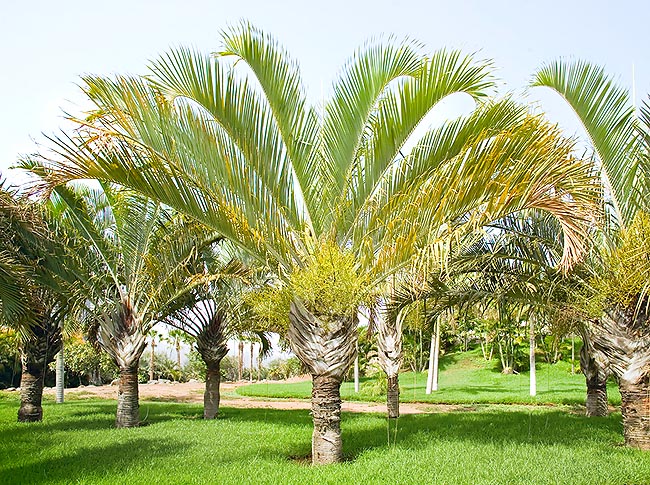Family : Arecaceae

Text © Pietro Puccio

English translation by Mario Beltramini

Called Triangle palm for its look. Amply cultivated in the Tropics © Giuseppe Mazza
The etymology of the genus is not known; the species is honoured to its collector, the French naturalist Raymond Decary (1891-1973).
It is locally called “laafa”, whilst in all the other languages the common name refers to its particular appearance: “palma triangolare” (Italian); “triangle palm” (English); “Dreieckspalme (German); “palma triangular” (Spanish); “Palmeira triângulo (Portuguese).
It shows a dark grey solitary trunk, tall up to 8 m, and diameter of 30-40 cm; the leaves, pinnate, long up to 3 m, are ascending, almost upright, apart the terminal tip, clearly arched, and disposed on three directions.
The petiole is short, of pale green colour, with a reddish down partially covered by white wax at the base; the leaflets are green-grey and inserted regularly on the rachis, to form a V turned upwards, the basal ones reduced to long filaments, hanging along the trunk. The ramified inflorescence, long about 120 cm, develops between the leaves and carries yellowish flowers united in groups of three (two male, one female), of about 3 mm of diameter; the fruits are ovoid, of yellowish green colour, of about 12-20 mm of diameter. The seeds germinate in 1-2 months.
It is widely cultivated for its ornamental characteristics, in particular due to the tristichous disposition and the colour of the leaves, in the tropical, subtropical and warm-temperate areas, where it can bear, when adult, and for short periods, lowest temperatures in the order of -2/-3 °C. Its main exigencies are full sun and very good drainage of the ground, besides this, it adapts to even poor soils, and when adult can bear long drought periods.
Synonyms: Neodypsis decaryi Jum. (1933).
→ For general notions about ARECACEAE please click here.
